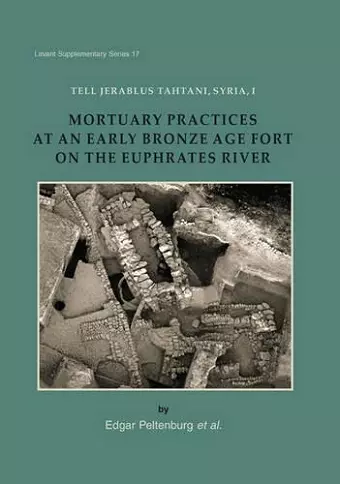Tell Jerablus Tahtani, Syria, I
Mortuary Practices at an Early Bronze Age Fort on the Euphrates River
Format:Hardback
Publisher:Oxbow Books
Published:30th Sep '15
Currently unavailable, and unfortunately no date known when it will be back

The Great Bend of the Euphrates River in North Syria and Southeast Anatolia was a strategic nexus of communications between different parts of the Ancient Near East and the Mediterranean. In spite of its potential for inter-regional studies, the area was largely neglected in the 20th century following the pioneering investigations of Sir Leonard Woolley, T. E. Lawrence and others at the historically renowned city of Carchemish. Modern dam-building near the city led to the excavation of threatened sites and these have revealed a much more complex picture in which, rather than simply a conduit for inter-regional networks, the bend attracted a unique concentration of varied communities from Neolithic times onwards.
Jerablus Tahtani, a multi-period tell site beside Carchemish, was excavated by a team from the University of Edinburgh from 1992 to 2004 within the framework of the international Tishrin Dam Salvage programme. Results shed new light on the Uruk expansion in the 4th millennium BC, extraordinary Euphrates flood episodes in the 3rd millennium BC, the ‘second urban revolution’ in Early Bronze Age Syria and prehistoric developments at neighbouring Carchemish.
This volume, the first major report on the site, deals with stratified mortuary evidence found at a Bronze Age fort that was built over the destroyed remains of an early 3rd millennium village. Most of the 70 graves belong to the time when Ebla claimed supremacy of the area. They are considered in terms of the role of burials in site abandonment processes. Special attention is given to a monumental tomb incongruously located at the entrance to this small fort. Its creation and life history are evaluated in the context of other highly conspicuous mortuary facilities in the region—monuments that served as places of social memory and vehicles for structuring a distinctive regional political trajectory within the Bronze Age of the Ancient Near East.
A most welcome contribution in the field of funerary archaeology in the Euphrates Valley. * Paléorient *
This monograph represents a stellar example of how archaeological reports should be constructed. * Antiquity *
ISBN: 9781785701436
Dimensions: unknown
Weight: unknown
392 pages